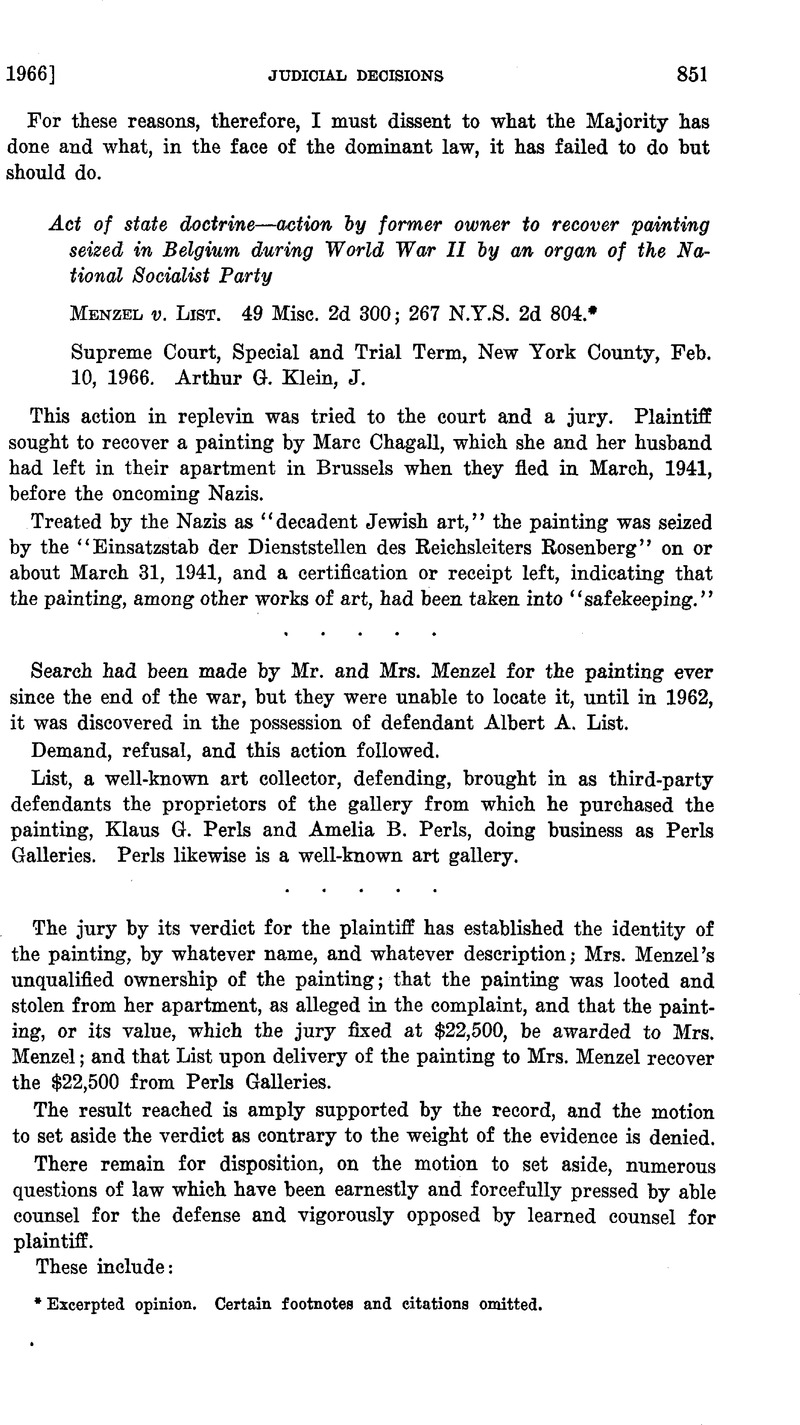Article contents
Menzel v. List. 49 Misc. 2d 300
Published online by Cambridge University Press: 28 March 2017
Abstract

Keywords
- Type
- Judicial Decisions
- Information
- Copyright
- Copyright © American Society of International Law 1966
References
1 Cf. Rules of Land Warfare, “War Department of the United States: “292. Means of transportation.—The military occupant exercises authority over all means of transportation, both public and private within the occupied district and may seize and utilize them and regulate their operation. “321. Two classes of movable property.—All movable property belonging to the State directly susceptible of military use may be taken possession of as booty and utilized for the benefit of the invader's government. Other movable property, not directly susceptible of military use, must be respected and cannot be appropriated. “329. Pillage is formally forbidden. “332. What included in rule.—The foregoing rule [art. L i n , par. 2, of the regulations annexed to the Hague convention quoted ante] includes everything susceptible of direct military use, such as cables, telephone, and telegraph plants, horses, and other draft and riding animals, motors, bicycles, motorcycles, carts, wagons, carriages, railways, railway plants, tramways, ships in port, all manner of craft in canals and rivers, balloons, airships, airplanes, depots of arms, whether military or sporting, and in general all kinds of war material.” Basic Field Mammal (FM 27-10, 1940) 77, 82, 84. Similar provisions are contained in the July 1956 revision, Department of the Army, FM 27-10
2 The Pact of Paris, also known as the Kellogg-Briand Peace Pact of 1928, was likewise entered into by Belgium, Germany, and the United States. It provided: “Outlawry of War. “Article I “The High Contracting Parties solemnly declare in the names of their respective peoples that they condemn recourse to war for the solution of international contro versies, and renounce it as an instrument of national policy in their relations with one another. “Article II “The High Contracting Parties agree that the settlement or solution of all disputes or conflicts of whatever nature or of whatever origin they may be which may arise among them, shall never be sought except by pacific means.” (46 U. S. Stat. 2343 et seq.)
3 As Henry L. Stimson, the Secretary of State of the United States, said, in 1932: “War between nations was renounced by the signatories of the Kellogg-Briand Treaty. This means that it has become throughout practically the entire world * * * an illegal thing. Hereafter, when nations engage in armed conflict, either one or both of them must be termed violators of this general treaty law * * *. We denounce them as law breakers.” Quoted at 6 F.K.D. 108.
- 1
- Cited by


